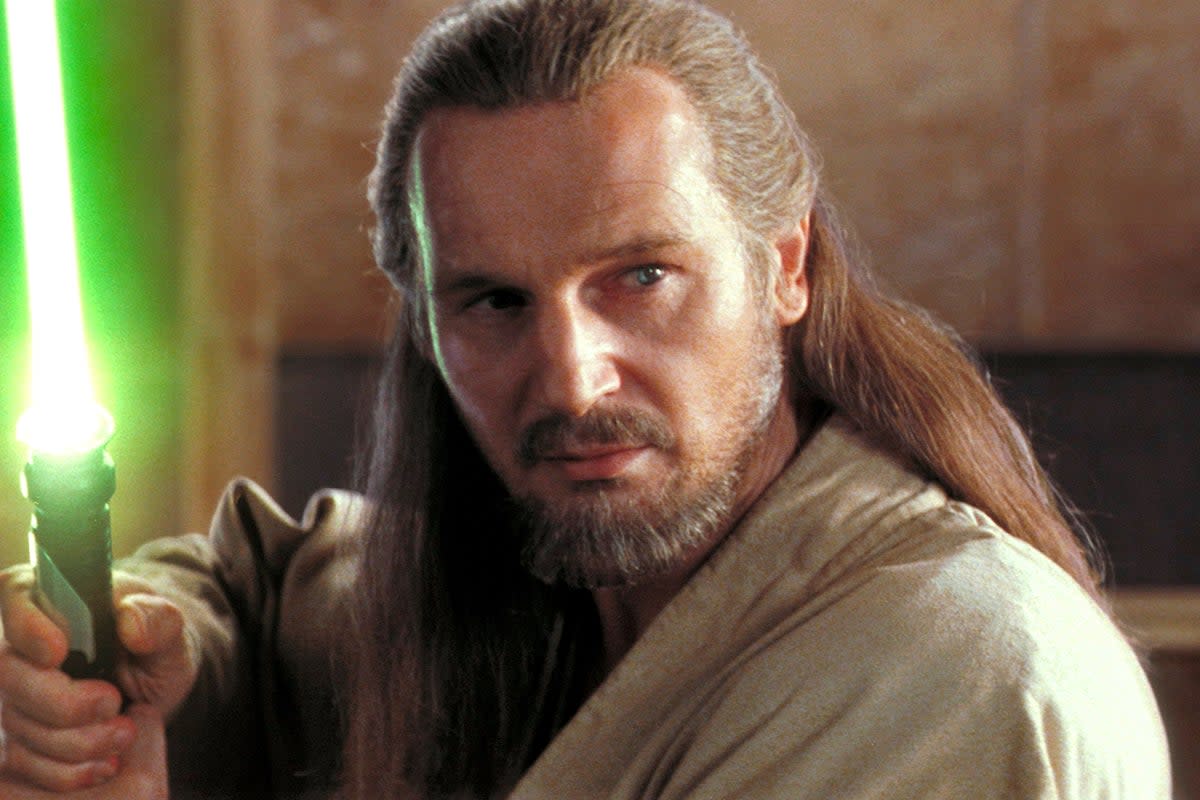Star Wars: The Phantom Menace has finally proved the haters wrong

I have gazed into the cool, still waters of Naboo and seen my own face looking back at me. I have plunged my hands into the sand of Tatooine and let the grains fall through my fingers. I have sat cross-legged on the floor of the Jedi Temple, stared at Yoda’s vegetal head and memorised every crevice. All of which is to say: I have, over the course of my life, watched the 1999 space opera Star Wars: Episode I – The Phantom Menace dozens, perhaps even hundreds, of times. And my only regret is that I didn’t watch it more.
There are few blockbusters as mocked and reviled as George Lucas’s first, mystifying prequel – the long-awaited follow-up to the cultural colossus that was the original Star Wars trilogy (1977-83). The complaints, back in 1999, were loud and myriad. It was too confusing. Woodenly acted. Over-CGI’d. The core premise revolved around “the taxation of trade routes”. And, of course, Jar Jar Binks. (Say no more.) Those, like myself, who are unabashed fans of The Phantom Menace are often accused of ironic revisionism – or, more dismissively, of being blinded by the goggles of childhood nostalgia. There is truth in this last charge, to some extent. I was four years old when The Phantom Menace pod-raced its way onto screens. It was my first exposure to Star Wars, and it was transformative; the majority of those 100+ watches came before I reached my teens. But now, as an adult, with correspondingly developed critical faculties, I feel no different. As The Phantom Menace returns to cinemas this week to mark its 25th anniversary, it’s time the film was recognised as more than a failure. It’s one of the most fascinating works of large-scale popular filmmaking ever put to screen.
Typically, when naysayers appraise The Phantom Menace, they offer up one sequence as concession: the lightsaber fight. And it’s true. The climactic set piece, in which Jedi knight Qui-Gon Jinn (Liam Neeson) and his apprentice (or “padawan”) Obi-Wan Kenobi (Ewan McGregor) battle acrobatically with the monstrous Darth Maul (Ray Park), is a brilliant and unique action spectacle. It is choreographed, shot, and scored (to John Williams’s sensational “Dual of the Fates”) with verve and originality; it makes the stiff sabre combat of the original trilogy look like geriatric fisticuffs. Sometimes, to this caveat, Phantom Menace detractors add a second scene: the pod race, in which a pint-sized Anakin Skywalker (Jake Lloyd) beats local thug Sebulba in a sort-of alien Nascar competition. This, too, is a propulsive and tightly engineered set piece.
But these sequences, great as they are, are not the reason I love The Phantom Menace. Rather, what’s transfixing about the film is the rest of it: the baggy, bemusing or occasionally offensive add-ons that make Lucas’s vision such a jaggedly unusual proposition. The political “point” of the film, in the context of the wider saga – the stagnant hubris of the Jedi order, the way in which liberal complacency paves the way for the rise of fascism – is almost entirely subtextual and, for children, surely impossible to grasp.
Then there’s the new lore, which includes a virgin birth and the much-ridiculed “midichlorians” – tiny amoeba-like creatures that we’re told are responsible for all the galaxy’s life force and are apparently coursing through young Anakin like Nespresso through the veins of George Clooney. Even the dubious and coded handling of race is – among other things – compelling to observe. The Neimoidian “Trade Federation”, for instance, introduced in the very first scene of the film, are nakedly racist caricatures, cunning and avaricious reptile people who speak in unplaceable pan-Asian accents. Unlike the rest of the film’s aliens, there is, strangely, no attempt to sync lip movement to the words they’re saying. You can’t help but wonder how on earth this made it to screens in the year 1999.
But, of course, part of The Phantom Menace’s intrigue comes from its datedness. In most regards, it is a film of a very particular time and place. It anticipated – and perhaps even ushered in – the era of banal, CGI-driven blockbuster slop that followed it, and yet could not be written off in the way most of these later efforts could. There is none of the platitudinous polish, the focus-grouped sameness, that would come to infest its descendants. It is the bizarre and uneven vision of a most unconventional visionary: Lucas’s pop-commercial instincts and the vestiges of his subversive New Hollywood roots fight between the lines like two scrapping cockerels.
That The Phantom Menace is getting re-released in cinemas nationwide attests to the goodwill this film still has with many younger Star Wars fans, as does the franchise’s increasing eagerness to bring back prequel stars – McGregor; Hayden Christensen; Ahmed “Jar Jar” Best – in new films and TV spin-offs. It’s only right that The Phantom Menace gets its flowers. For a film that was so famously damned by consensus, there doesn’t seem to be much consensus at all.
‘Star Wars: Episode I – The Phantom Menace’ is re-released in cinemas from 3 May

 Yahoo News
Yahoo News 
